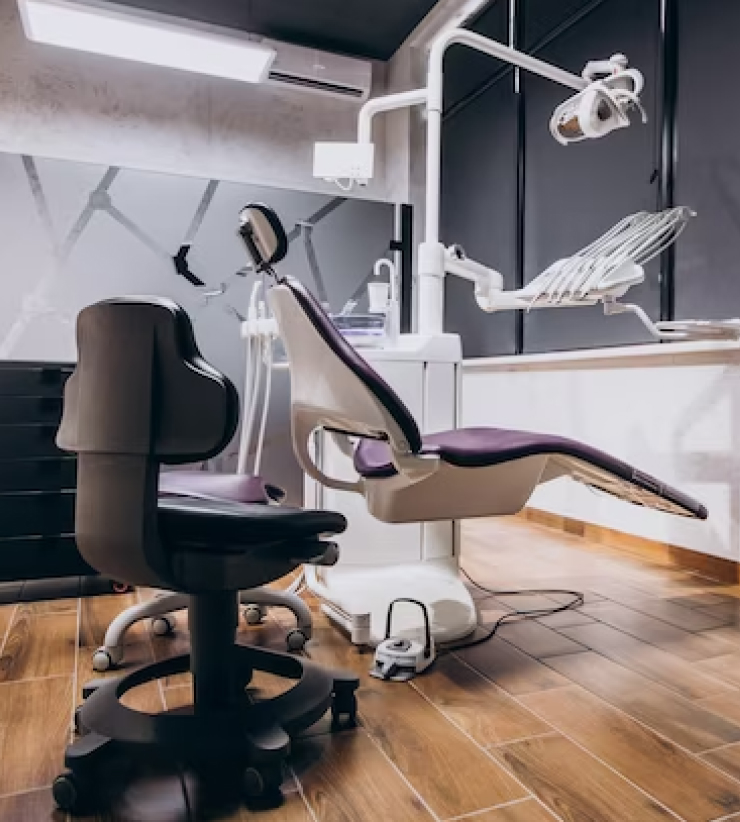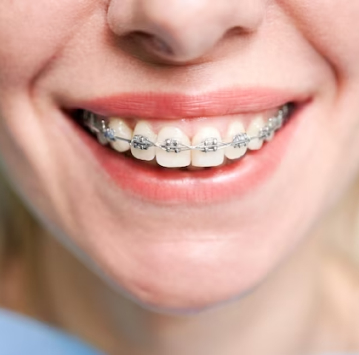Implantology
Implantology - Guided surgery

Effective solution to replace missing or damaged teeth
A dental implant is a structure made of titanium or zirconium, which is placed in the bone of the jaw or upper jaw to replace a lost tooth root.
Dental implants are used in dentistry as a solution to replace missing or damaged teeth. They consist of a small piece that is surgically inserted into the patient’s bone and acts as a solid base to support a dental prosthesis, such as a crown, a dental bridge, or even a complete denture.
The process of placing a dental implant generally involves several stages:

The dentist or oral surgeon evaluates the patient’s oral health and performs x-ray studies to determine if he or she is a suitable candidate for a dental implant.
Surgery is performed to insert the implant into the jaw bone. After this stage, the bone is allowed to heal and integrate with the implant in a process called “osseointegration,” which may take several weeks or months.
Once the implant has fused to the bone, an abutment or connector is placed on top of the implant. This pillar acts as a base for the dental prosthesis.
The patient’s mouth is scanned and the crown, bridge or denture that will fit on the abutment is manufactured.
The final dental prosthesis is placed over the abutment, thus restoring the function and appearance of a natural tooth.
Dental implants are a popular option for replacing missing teeth because they offer a long-lasting, natural solution, as well as improving chewing and dental aesthetics. However, not all patients are candidates for implants, as an adequate level of oral health and sufficient bone density in the jaw or maxilla are required for the implant to be successful. Therefore, it is important to consult a dental health professional to determine if dental implants are a suitable option in a particular case.

Guided dental surgery
We prepare prostheses immediately
Guided dental surgery is an advanced approach in dentistry that uses three-dimensional (3D) imaging technology and planning software to plan and perform dental surgical procedures in a precise and predictable manner. This predictability allows the dentist, in cases where it is possible, to prepare an immediate prosthesis, so that the patient leaves the clinic with temporary teeth.
This approach is commonly used in dental implant placement procedures, although it can also be useful in other types of dental surgeries.
The main components and steps of guided dental surgery are described below:
A 3D computed tomography (CT) scan or dental x-ray of the patient’s oral area is performed. This image provides a detailed three-dimensional representation of the mandible, maxilla and surrounding structures, allowing the dental surgeon to perform precise planning.
Using the planning software, the surgeon can analyze the 3D image and design the surgery virtually. You can determine the exact location where the dental implants will be placed and plan the depth and angle of insertion.
From virtual planning, a personalized surgical guide is manufactured for the patient. This guide is placed in the mouth during surgery and serves as a precise tool to guide the placement of the implants in the previously planned locations.
During surgery, the surgeon follows the instructions of the surgical guide, ensuring that the implants are placed in the planned positions with millimeter precision. This reduces the risk of errors and allows for a faster and less painful recovery for the patient.
The benefits of guided dental surgery include greater precision in implant placement, lower risk of complications, faster recovery, and a more comfortable patient experience. Additionally, virtual planning allows the surgeon to evaluate bone quality and make informed decisions about the best placement for implants.
Guided dental surgery is an especially useful option in complex cases or in patients with specific needs, such as a lack of sufficient bone tissue. However, not all dental procedures require guided surgery, and their use may depend on the dental surgeon’s evaluation and recommendations.

Other services
Discover what we offer at Mahfoud & Serrano









